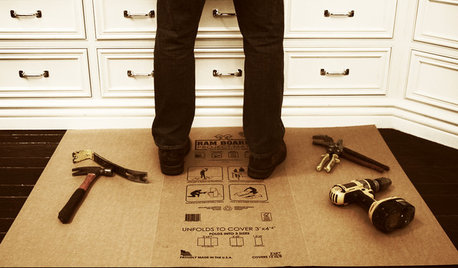old cistern info
ks_toolgirl
13 years ago
Related Stories

SAVING WATERIs a Rainwater Cistern Right for You?
These extra-large containers reduce runoff and save on the use of potable water for the landscape
Full Story
SELLING YOUR HOUSEThe Latest Info on Renovating Your Home to Sell
Pro advice about where to put your remodeling dollars for success in selling your home
Full Story
DECORATING PROJECTSWhat to Do With Old Family Photos
Find out how to research, share and preserve images that offer a connection to the past
Full Story
ARCHITECTUREStyle Divide: How to Treat Additions to Old Homes?
One side says re-create the past; the other wants unabashedly modern. Weigh in on additions style here
Full Story
TRANSITIONAL HOMESHouzz Tour: Embracing Old and New in a Montana Bungalow
This home’s exterior fits the historic neighborhood, but its new, more modern floor plan fits the owners’ lifestyle
Full Story
BATHROOM DESIGNOut With the Old Tile: 8 Steps to Prep for Demolition
This isn't a light DIY project: You'll need heavy-duty tools and plenty of protection for your home and yourself
Full Story
UPHOLSTERYThe Perks and Perils of Reupholstering Old Furniture
Secondhand upholstered pieces can add character to a room, but beware of bugs, snakes and hidden costs
Full Story
FARMHOUSESHouzz Tour: An Old Barn Inspires a Gracious New Home
Graceful and elegant, this spacious home in the Virginia countryside takes farmhouse style up a notch
Full Story









brickeyee
ks_toolgirlOriginal Author
Related Professionals
Corcoran Kitchen & Bathroom Designers · Arcadia Kitchen & Bathroom Designers · Kalamazoo Kitchen & Bathroom Designers · Mount Prospect Kitchen & Bathroom Designers · Schenectady Kitchen & Bathroom Designers · Saint Charles Kitchen & Bathroom Designers · Cloverly Kitchen & Bathroom Remodelers · Bethel Park Kitchen & Bathroom Remodelers · Buffalo Grove Kitchen & Bathroom Remodelers · Folsom Kitchen & Bathroom Remodelers · Hanover Township Kitchen & Bathroom Remodelers · Red Bank Kitchen & Bathroom Remodelers · Richland Kitchen & Bathroom Remodelers · Plainfield Architects & Building Designers · Nanticoke Architects & Building Designersclg7067
ks_toolgirlOriginal Author
brickeyee
calliope
denton_debbie_yahoo_com
calliope